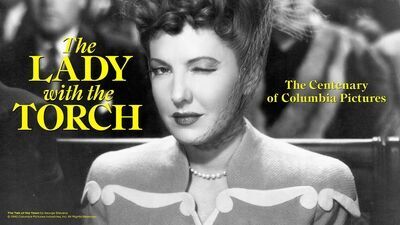“Let Us Live” (1939)

Anytime I see Henry Fonda on screen, it’s a jarring experience. Not because he isn’t an incredible actor. I’m just awestruck by how his naturalistic style is so far ahead of his contemporaries. While 1939 was a banner year for Fonda — featuring starring roles in “Jesse James,” “Drums Along the Mohawk,” and “Young Mr. Lincoln” — its director John Brahm’s “Let Us Live” of the same year that gives a full accounting of Fonda’s incredible range.
He begins the film in the image of his soft-spoken everyman persona as Brick Tennant, an optimistic cab driver preparing to wed Mary Roberts (Maureen O’Sullivan). His world is turned upside down, however, when an old friend — Joe Linden (Alan Baxter) — arrives looking for a job and a place to crash. Brick hires Joe, loaning him an old cab that Joe, with a ruthless gang, uses to stage several robberies. The thefts lead back to Brick, putting him on death row with Joe while Mary teams with Lieutenant Everett (Ralph Bellamy) to clear Brick’s name. This film takes a hard look at capital punishment and critiques the inequities of the justice system. And while the actual investigation is frustrating, that’s sorta the point: The system is so intent on finding a culprit, it haphazardly points the finger at Joe. The hopelessness of Brick’s plight causes the once genial man to change. By the end, Fonda is a completely different person — draped in an uncontrollable rage that foreshadows the later darkened turn he’d take in “Once Upon a Time in the West.”
“Girls Under 21” (1940)

A fascinating entry in the “women’s picture” subgenre, Max Nosseck’s “Girls Under 21” is a morality play that’s simple enough. Frances White Ryan (Rochelle Hudson) returns to her downtrodden neighborhood following a prison sentence in connection with her gangster husband Smiley Ryan (Bruce Cabot). Frances wants to go straight, but the older, conservative women in her community won’t forget her past. Meanwhile, Frances’ sister Jennie (Tina Thayer), along with Jennie’s young cohort, want Frances’ fine clothes and lifestyle. They decide on a life of crime, despite their idealistic teacher Johnny Crane (Paul Kelly) believing they’re capable of more. The girls’ criminal ways eventually lead to tragedy, in a scene so shocking in its violence, it caused the entire theater to audibly gasp. Nosseck’s picture is more didactic than you’d like, and features some canned performances — but it is a compact, nifty film nonetheless.
“Under Age” (1941)

While “Girls Under 21” might be a tad too ‘afterschool special’ to be hard hitting, Edward Dmytryk’s “Under Age” is so in your face I almost mistook it for a Pre-Code. Dmytryk’s arresting blend of social issues and exploitation — a line he would jump back and forth over throughout his career, particularly with “The Sniper” (1952) — pushes this film to the limits of the censors. Another “women’s picture,” it supposes an issue afflicting America’s highways and byways: roadside motels using young women to lure male drivers for a good time. Sisters Jane (Nan Grey) and Edie Baird (Mary Anderson) are hired by one such chain owned by Mrs. Burke (Leona Maricle) following their release from prison. While the older, responsible Jane catches the eye of jewelry heir Rocky Stone (Tom Neal), her younger sister Edie — drunk off the money, fine clothes, and attention afforded by her salacious trade — falls for Mrs. Burke’s violent right-hand-man Tap Manson (Alan Baxter). Surprisingly the film does more than allude to these women as prostitutes, and features an incredibly gruesome murder that left my mouth agape. Its theme of collective empowerment is stirring; its use of shadows is evocative; its awareness of the body to enrapture is startling. This film feels like one of the real discoveries from the series.

